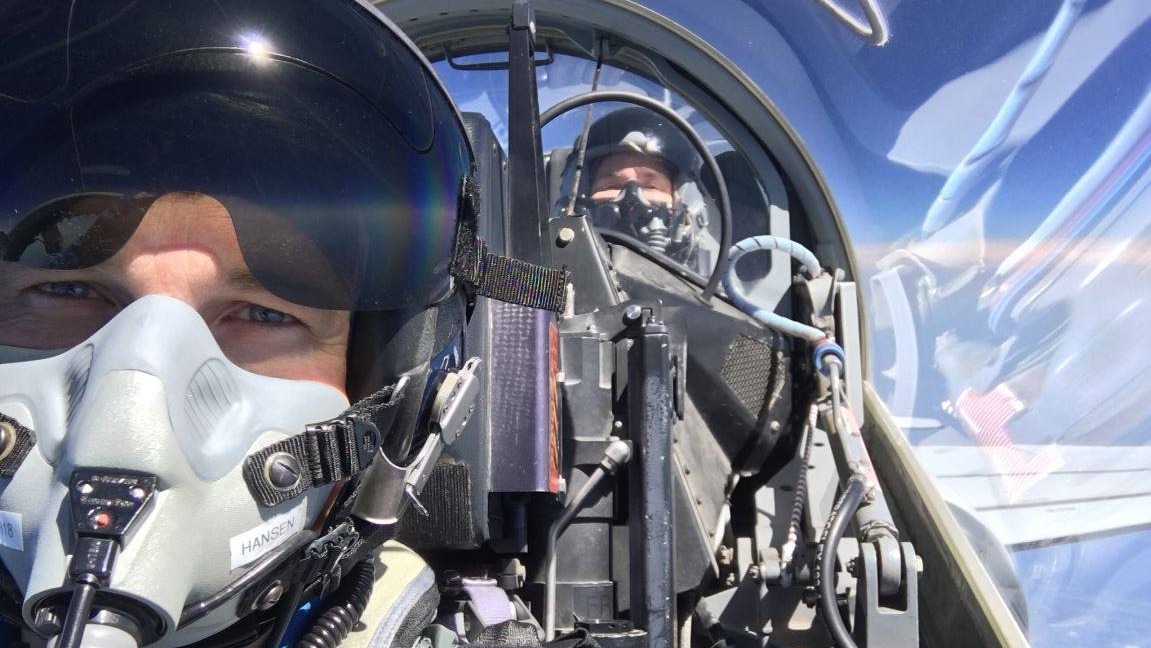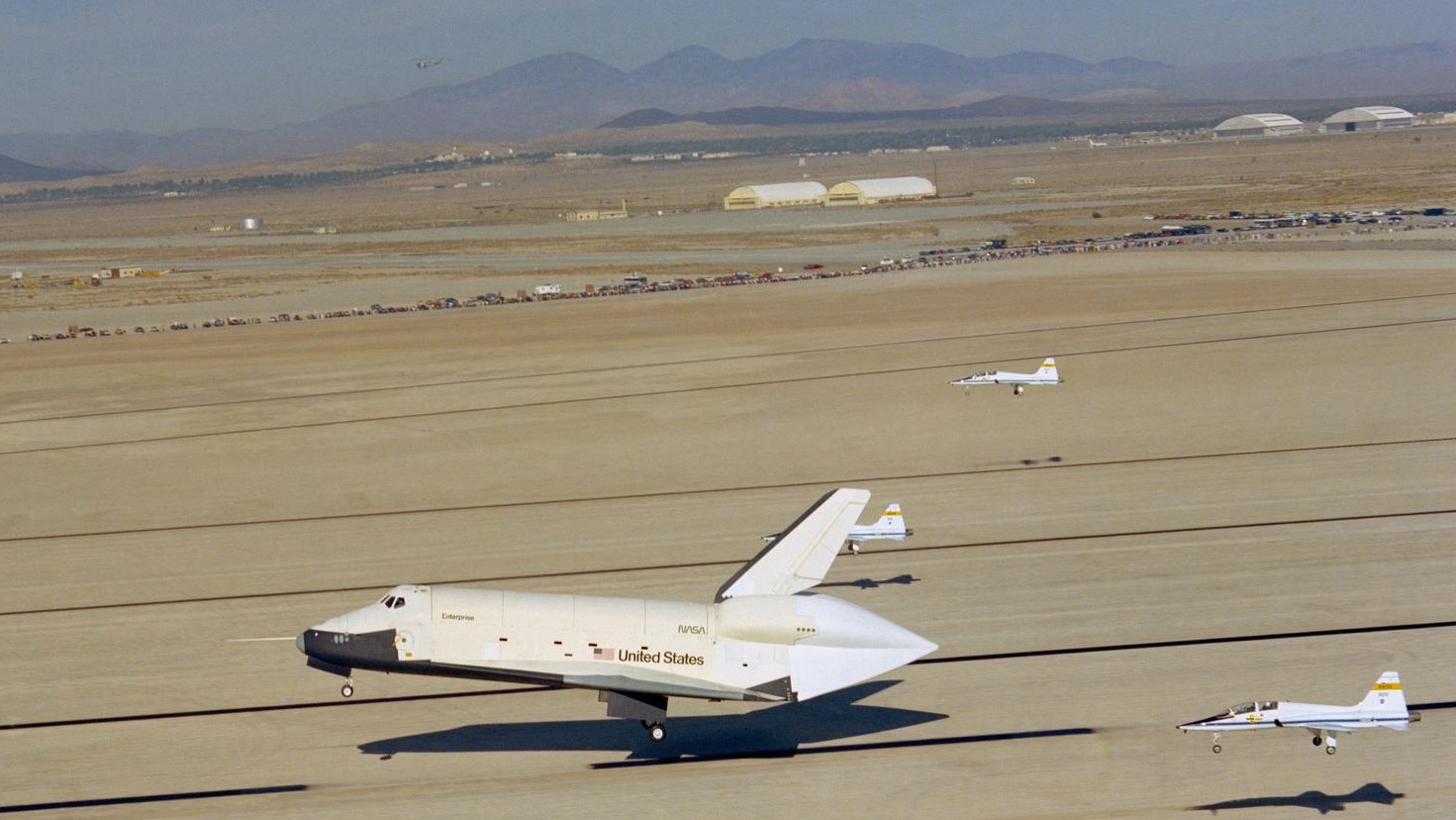Artemis 2 moon astronaut explains risk of flying NASA's supersonic training jet

Fighter jet pilot and astronaut Jeremy Hansen has seen a few things on his way to the moon.
One of the four crewmembers of the Artemis 2 moon mission slated to launch in November 2024, Canadian Space Agency (CSA) astronaut Jeremy Hansen recently praised the supersonic T-38 trainer jet for its ability to keep astronauts on their toes while in flight.
"We use these airplanes because they're challenging," Hansen said in a video released Tuesday (July 18) on the CSA's social media channels.
"We can have two astronauts in the cockpit together working as a team, just like we do in a spacecraft. We have so many amazing simulators here ... but none of those simulators will kill you. This will. That is one of the benefits of this training, is that we are managing real risks preparing us to go to space."
Related: Four for the moon! NASA names Artemis 2 astronaut crew for 1st lunar mission since Apollo
Artemis 2 will be the first moon mission in a half-century with humans on board. It includes NASA astronauts Reid Wiseman, Victor Glover and Christina Koch, along with Hansen. The first human lunar landing mission since 1972's Apollo 17 will be Artemis 3, currently scheduled to launch in 2025 or 2026 if schedules hold. (This week also marks the 54th anniversary of the first human moon-landing mission, Apollo 11, on July 20.)
During Artemis 2, NASA has pledged that all four astronauts on board will get to fly the Orion spacecraft to provide data for future missions. Hansen and Koch are mission specialists on that spacecraft, while Glover is pilot and Wiseman will be commander.
Breaking space news, the latest updates on rocket launches, skywatching events and more!
Canada's seat on Artemis 2 came via its contributions to NASA's Artemis program, which aims to establish a sustainable human presence on and around the moon by the end of the 2020s. The chief contribution is a robotic arm known as Canadarm3, which will service NASA's Gateway space station at the moon later in the decade.
Hansen has considerable ground experience to bring to his moon mission, including having managed the training schedules of the entire 2017 astronaut class — a first for a Canadian. He also has thousands of hours in the cockpit across different airplane types. While selected in 2009, he has not yet flown to space, as Canada has a modest 2.3% robotics contribution to the International Space Station, which works out to a CSA flight about every six years or so under current launching rates.
Hansen first began flying gliders with Canadian Air Cadets at age 16 and got his private pilot license the year after. He joined the Royal Military College as an undergraduate, and his flight experience includes serving as a CF-18 fighter pilot with two tactical fighter squadrons, along with a role as combat operations officer for NORAD (North American Aerospace Defense Command) operations, deployed exercises and Arctic flying operations.
Related: Artemis 2's Canadian astronaut got their moon mission seat with 'potato salad'
The T-38 has earned generations of respect from astronauts, including fellow CSA astronaut and 2009 class selectee David Saint-Jacques, who flew to the International Space Station in 2018-19. (Incidentally, that was the only spaceflight opportunity in recent years that either Hansen or Saint-Jacques were eligible for; they were still astronaut candidates during selection for the last opportunity in 2012-13, which went to Chris Hadfield.)
Saint-Jacques recorded a YouTube video lauding the T-38's capabilities in 2015. He is a medical doctor by training who learned some basic flight moves from Hansen himself, shortly after both astronauts were selected by CSA.
"You are in an uncomfortable cockpit," Saint-Jacques said in the video of the T-38 experience. "You’re wearing a helmet, oxygen mask. There's tens of dials in front of you. You have to monitor all that data; the radio, on many channels talking at the same time. You have to constantly filter out what is important, and to make decisions that could have big impacts. You cannot press pause while you're flying a jet."
Manufacturer Northrop Grumman says more than 72,000 U.S. Air Force pilots have trained in the T-38 since it first rolled off the line in 1961. Though it was only manufactured until 1972, more than 500 continue to be used by both the Air Force and NASA.
The supersonic trainer soars as fast as Mach 1.6 and as high as 40,000 feet (12 kilometers), well above where many commercial airliners fly, according to NASA. Pilots can pull up to seven Gs, or forces of Earth gravity, in the cockpit. Not only is it enough to make an untrained person black out, but even holding up the pilot's neck is akin to "balancing a cinder block," agency officials wrote.
Proficiency training for flight has been baked into NASA astronaut protocols from the dawn of the program, after the first astronauts (all pilots) were hired in 1959. Typical trainers for the agency's Mercury program included the F-102A and T-33A, according to agency materials.
The T-38 was introduced during the Gemini program and continues to be valued by NASA despite the risk to its astronaut corps. Gemini program astronauts Ted Freeman, Elliot See, Charles Bassett and Clifford Williams all passed away in T-38 crashes in the 1960s due to various causes, and a few of the astronauts have had near-misses over the decades (famously including Gemini, Apollo and Skylab astronaut Pete Conrad in 1972.)
NASA houses its T-38s at Ellington Field, a short drive from NASA's Johnson Space Center in Houston where American spaceflight training is centered. In the space shuttle era, pilots and commanders did at least 15 hours a month of flying for proficiency.
"It pulls Gs not quite like a frontline fighter," astronaut Terry Virts said in 2011, in a NASA feature about the T-38. "It's fast ... frontline fighters are faster, but the one thing the T-38 can do amazingly well is roll. You jam the stick to the side, and it rolls really, really fast. That's something that on your first flight they always want to demo to you. At first, you're like, 'Oh, cool!' and then after a bunch of rolls, you're like, 'All right, that's enough rolling the airplane.'"
Aside from general training purposes, the T-38 was operationally used in a few ways during the space shuttle program. One was to have the supersonic trainer accompany the space shuttle during the early landings of the program, so that the T-38 pilots could advise the shuttle pilots on the condition of their spacecraft if needed.
Modified T-38s were also flown as one way of showing pilots how to safely bring a space shuttle back to Earth. Extra-large airbrakes and lowered landing gear were among the changes, which had to be certified for safety before NASA used the altered T-38 for training, the agency said.

Elizabeth Howell (she/her), Ph.D., was a staff writer in the spaceflight channel between 2022 and 2024 specializing in Canadian space news. She was contributing writer for Space.com for 10 years from 2012 to 2024. Elizabeth's reporting includes multiple exclusives with the White House, leading world coverage about a lost-and-found space tomato on the International Space Station, witnessing five human spaceflight launches on two continents, flying parabolic, working inside a spacesuit, and participating in a simulated Mars mission. Her latest book, "Why Am I Taller?" (ECW Press, 2022) is co-written with astronaut Dave Williams.


